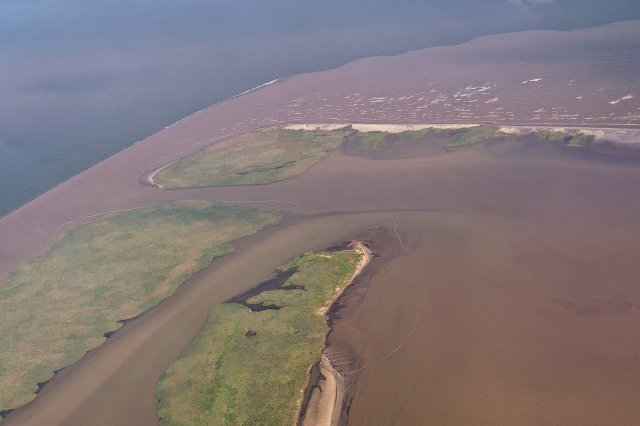Water Quality Impacts of Nutrients Research

Although nutrients are a natural and vital part of aquatic ecosystems, an influx of nutrients in excess, usually a result of human activities, can have a range of impacts. Harmful algal blooms (HABs) can occur when algal (or cyanobacteria) populations are dense enough to result in adverse environmental or health outcomes. Rapid algal growth can harm water by decreasing the oxygen that fish and other aquatic life need to survive. This process can lead to hypoxia, or “dead zones”, that cannot support aquatic life. In addition, the growth of algae resulting from nutrient pollution releases carbon dioxide which contributes to acidification in coasts and estuaries. Due to the complexities of water bodies, watersheds, estuaries, and coastal systems, the impacts of factors that contribute to hypoxia and coastal acidification are not fully understood.
EPA research is advancing the understanding of nutrient-related impacts across water bodies and watersheds to inform nutrient management strategies. Examples of this research include the following:
- New data analysis methods to characterize hypoxia and acidification in space and time.
- Novel approaches to identify the factors contributing to nutrient-enhanced acidification and hypoxia (NECAH) including tracking sources of carbon and nitrogen and linkages between ecosystem metabolism and NECAH.
- Models, methods, and tools to examine environmental responses to nutrients across a range of temporal and spatial scales.
- Relationships between watershed land use, nitrogen, and co-pollutants (phosphorus, sediments).
- Methods to assess the status of nutrient indicators and nutrient-sensitive biota, including methods to quantify seagrass extent using high satellite imagery and machine learning.
- Tools to support nutrient criteria development and attainment of water quality goals.
Sustainable Watersheds and Nutrient Pollution

EPA develops the models and tools needed to achieve sustainable solutions for managing nutrients in our watersheds – from freshwater streams to marine coastal environments.
Research Activities:
- Identify the appropriate nutrient levels for waterbodies and use those levels as targets for resource protection and nutrient reductions.
- Use new technologies to monitor nutrient levels and water quality.
- Evaluate the public health and environmental effects originating from waters with excess nitrogen and phosphorus.
- Predict how management decisions and future climate change impacts will alter nutrient levels and affect aquatic ecosystems.
- Assess the effectiveness of a range of management practices for achieving sustainable reductions in nutrient pollution of water resources.
Related Research
- Nutrients
- Human Dimensions of Water Quality
- Nitrogen Modeling and Mapping
- Nutrient Management
- Harmful Algal Bloom and Cyanobacteria
- Reducing Excess Nutrients Research Pilot
